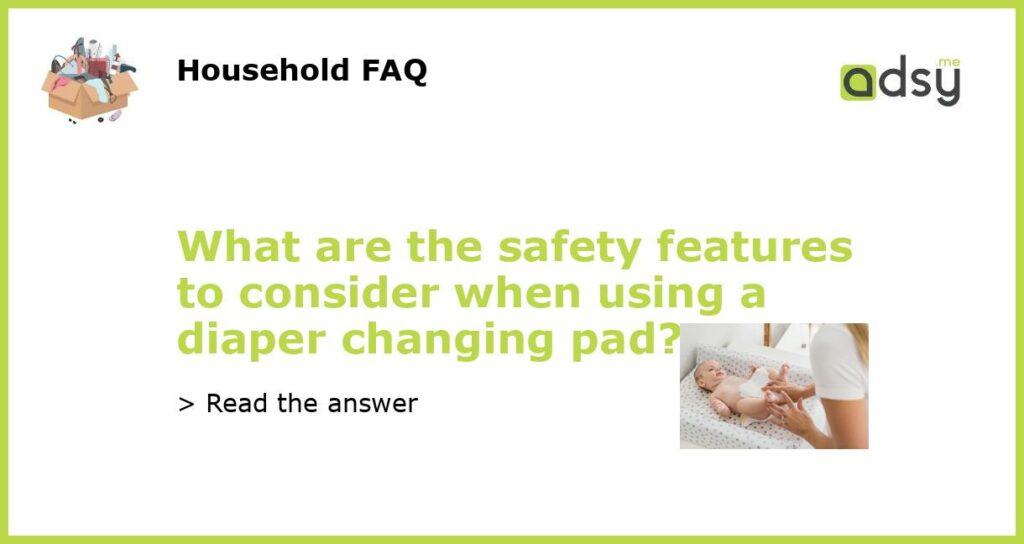Safety Features to Look for in a Diaper Changing Pad
Diaper changing pads are essential for every parent, and they make the diaper changing process easy and convenient. However, it is important to note that not all changing pads are created equal. Safety should always come first when choosing a diaper changing pad. In this article, we will discuss the safety features to consider when using a diaper changing pad.
Non-toxic Materials
The first safety feature to consider when selecting a diaper changing pad is the material it is made of. Look for pads made with non-toxic materials that are safe for your baby to be in close contact with. Avoid changing pads made of synthetic materials or those that contain harmful chemicals like PVC, phthalates, and flame retardants. Choose pads made of materials like organic cotton, bamboo, or wool.
Contoured Design
Flat changing pads increase the risk of your baby rolling off and falling. Contoured changing pads have raised sides that provide extra support and help keep your baby safe and secure. They offer more stability and allow you to change your baby’s diaper easily, without worrying about them rolling off.
Non-Slip Base
The non-slip base is another essential safety feature to look for when buying a diaper changing pad. A pad with a non-slip base won’t slide around on the changing table, providing extra stability to your baby. It reduces the risk of the baby slipping off the pad and falling from the table, especially when they start to move around.
Waterproof Surface
Diaper changing is not always a clean process, and it can get messy at times. Choosing a changing pad with a waterproof surface is a smart choice because it prevents liquids, creams, and oils from penetrating the pad’s material. Additionally, a waterproof surface makes cleaning the pad easy, which is essential for maintaining good hygiene in your baby’s changing area.
Healthy Hygiene Practices
Finally, it is important to practice healthy hygiene practices when using a diaper changing pad. Make sure to sanitize the pad regularly and wash your hands before and after changing your baby’s diaper. Always keep a close eye on your baby and never leave them unattended on the changing pad.
In conclusion, choosing a diaper changing pad that offers safety features like non-toxic materials, contoured design, non-slip base, waterproof surface, and good hygiene practices are essential for a safe and convenient diaper changing experience.






